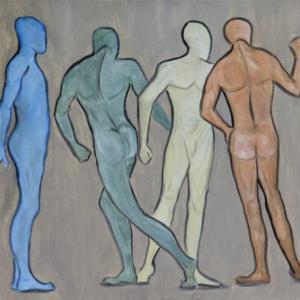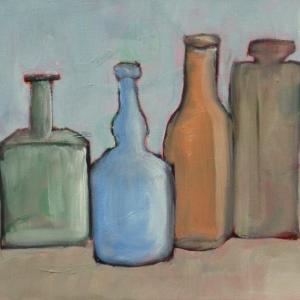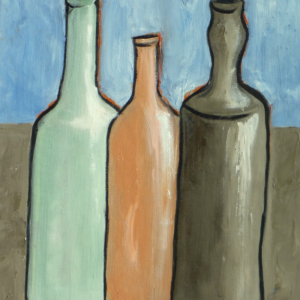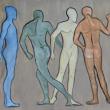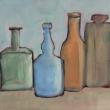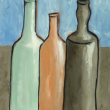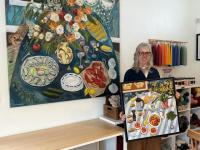Joy to the Wind
‘Three Good Reasons’: Invoking the subtlety of Giorgio Morandi
Mon, 08/29/2022 - 2:30pm
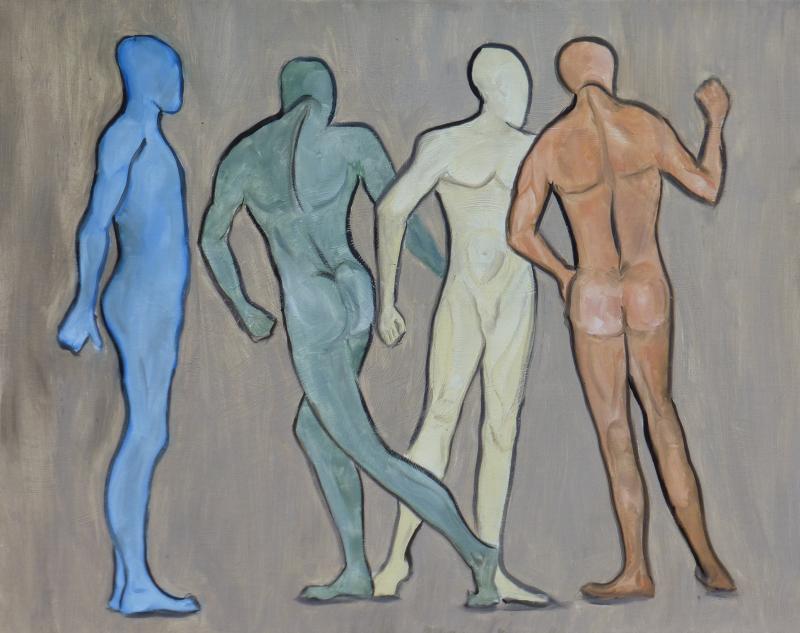 “Close Proximity” - 16” x 20” oil by Lynne Seitzer. See it at Joy to the Wind Gallery in Boothbay Harbor through Sept. 30. Courtesy of the artist
“Close Proximity” - 16” x 20” oil by Lynne Seitzer. See it at Joy to the Wind Gallery in Boothbay Harbor through Sept. 30. Courtesy of the artist
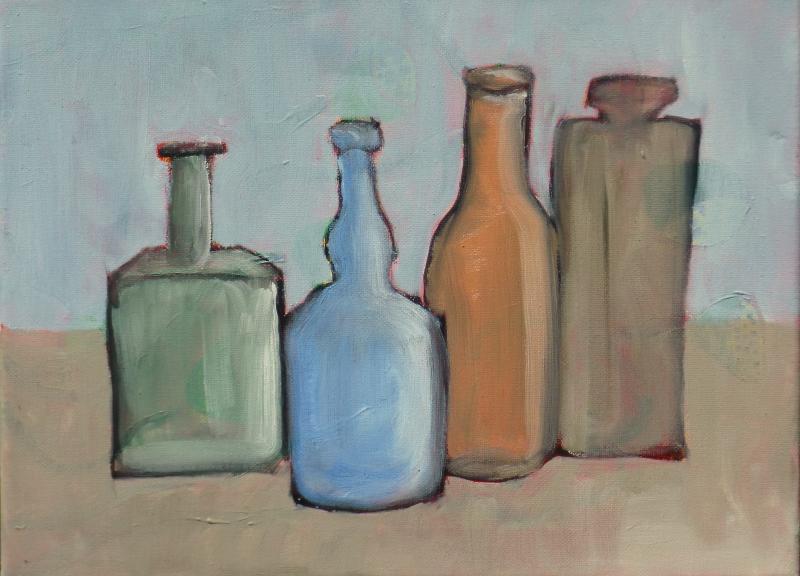 “Bottles” - 12” x 16” oil on canvas by Lynne Seitzer. Courtesy of the artist
“Bottles” - 12” x 16” oil on canvas by Lynne Seitzer. Courtesy of the artist
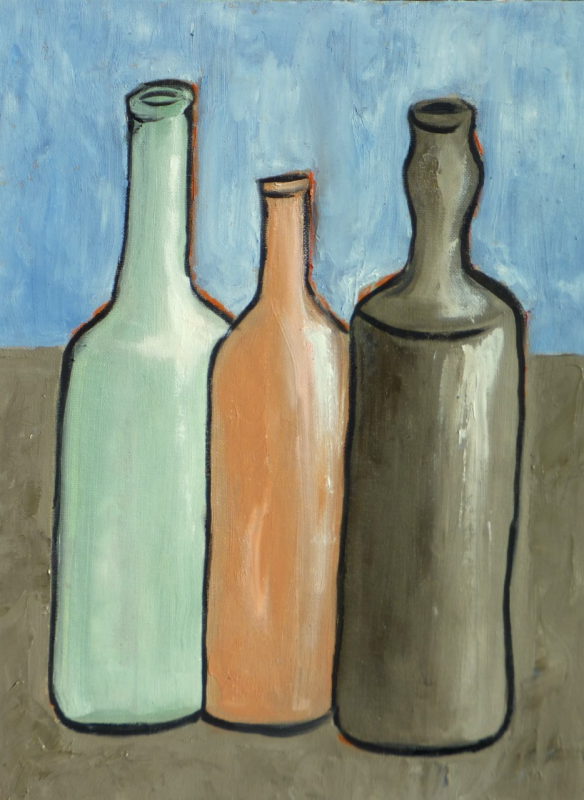 “Three Good Reasons” - 16” x 12” oil by Lynne Seitzer. Courtesy of the artist
“Three Good Reasons” - 16” x 12” oil by Lynne Seitzer. Courtesy of the artist
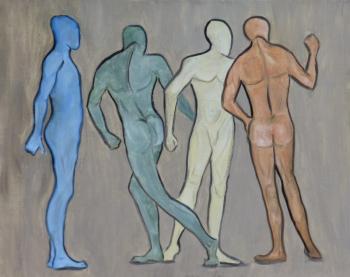 “Close Proximity” - 16” x 20” oil by Lynne Seitzer. See it at Joy to the Wind Gallery in Boothbay Harbor through Sept. 30. Courtesy of the artist
“Close Proximity” - 16” x 20” oil by Lynne Seitzer. See it at Joy to the Wind Gallery in Boothbay Harbor through Sept. 30. Courtesy of the artist
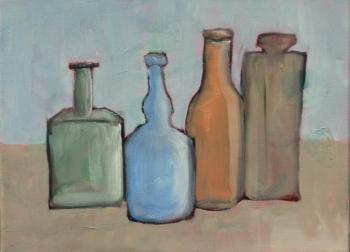 “Bottles” - 12” x 16” oil on canvas by Lynne Seitzer. Courtesy of the artist
“Bottles” - 12” x 16” oil on canvas by Lynne Seitzer. Courtesy of the artist
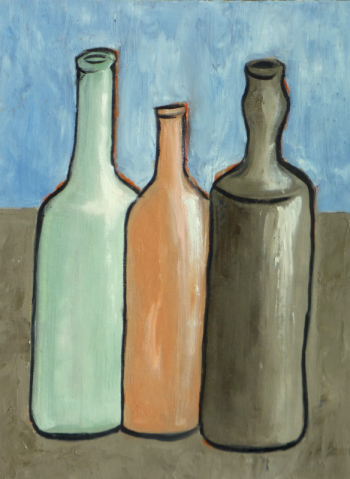 “Three Good Reasons” - 16” x 12” oil by Lynne Seitzer. Courtesy of the artist
“Three Good Reasons” - 16” x 12” oil by Lynne Seitzer. Courtesy of the artist
The earliest known still lifes (depictions of inanimate objects) were created by Egyptians in the 15th century BC. Many were these discovered on tombs. The Greeks and Romans created still lifes of fruit and vessels in the form mosaics and frescoes. During the Middle Ages artists incorporated symbolic arrangements into illuminated manuscripts. Later, northern Renaissance artists popularized still life floral paintings, and by the 17th century they were painting realistic studies of everyday items. Later they included symbols such as musical instruments, wine bottles and water jugs. These were reminders of the “vanity” of worldly goods and pleasure.
During the Dutch Golden age artists went a step further incorporating mementos to remind us that life is fleeting. These “vanities” often included skulls, dying flowers and rotting fruit.
The still life remained a popular feature in many art movements. Manet called the still life “the touchstone of painting.” The post impressionists such as Van Gogh and Cezanne adopted subject matter such as vases, vessels, flowers and fruit. Cubists Picasso and Braque found still life perfectly depicted their cubist concepts. Lichtenstein and Morandi also favored the objects of everyday life, from vases to bowls.
Giorgio Morandi (1890-1964) once said “Still life is architecture.” Sometimes referred to as an ‘unclassifiable’ artist, Morandi painted his architectural forms with subtle chalk like colors. Outwardly simple subjects that feel quiet and soft. This calming artistic simplicity prompted me to explore his process for myself.
Initially sketching small groups of vessels, I choose three to interpret in oil. First applying a brightly colored oil underpainting over three repurposed canvases. Next I mixed my own versions of chalky blues, greens, oranges and umber colors. I painted the vessels and background. (Where possible the underpainting is revealed to create an added element of interest.) Finally I applied the bold outlines to each vessel. The process was very satisfying and that made me want to experiment further. This time interpreting the still life forms as animate objects. These are paintings of very simplified human figures, some still and some in action and all maintaining the same subtle chalk tones. In conclusion, this small body of work invokes the history of the still life, Giorgio Morandi’s interpretations and also my desire to be considered an unclassifiable artist. Never stop.
“Three Good Reasons” will be on display at Joy To The Wind Gallery, 34 Atlantic Ave., Boothbay Harbor, through Sept. 30.
Event Date
Address
34 Atlantic Avenue
Boothbay Harbor, ME 04538
United States
Standard Post

